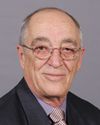Thank you for inviting us here today.
I'd like to thank Veterans Affairs Canada for funding for the research we did into Canadian veterans. We did what we think is the largest study of falling among veterans of Canada.
I've summarized the results of our work in the brief I submitted. I won't take your time by re-reading it, but I'd like to point out three key points.
We found that falling is more frequent among Canada's veterans than in the general population of older adults. We know that Canada's veterans report poorer self-rated health than the general population, and we found that although it's a small number, 3.8% of the sample reported not having enough funds left over at the end of the month to meet their obligations. We found when we did analyses on that variable that those people also had an increased risk of falling.
I point out those, which might seem to be negative comments, but I want to start on the positive, because I know Veterans Affairs Canada has an excellent reputation for its compassionate care of veterans. I've read the Keeping the Promise document, and I want to compliment the agencies responsible for that document.
I will just go through what I think are some positive features of the Keeping the Promise document and then conclude with what I think are some things that have to be kept in mind as you go forward in revising this excellent program.
The positive features of the Keeping the Promise document are the single point of access and the coordination of services, particularly the coordination with provincial health care. In Ontario we have the CCAC, and I think that's essential.
Another positive feature is that these people will be working closely with primary care, which is absolutely essential. The team-based care and the case manager model is another positive benefit. The comprehensive assessment of older adults is evidence-based and appropriate.
I note with great approval the mention of physical activity and fall prevention. Fitness classes are specifically mentioned, and Clara will be talking about that, because that's her area of expertise.
Also, I was very happy to see evaluation and research mentioned in the document.
As you move forward revising this excellent program, I have some evaluation questions that I would encourage you to keep in mind. It's important that you are sure that the funds follow the veteran or older adult on a needs basis. It's one thing to have people eligible for a service, but if they don't need the service, the money may not be used to maximum benefit. I think we really have to be able to be sure that the funds are being used where they are most needed.
An evaluation question I have is, to what extent are VIS funds truly integrated with provincial funds? When I did my fall prevention study, I had doctors calling me. The evidence suggests that doctors should call back their patient to evaluate, say, the number of medications they're receiving. I had physicians tell me that they didn't think OHIP, in Ontario, would pay to call back a veteran to check on things based on what their questionnaire told us they should check.
That's a real concern to me, because that raises the question of funding. We know we have the evidence that we can prevent falls, but the question, as always, is who's paying, and are the funds travelling with the client the way they should be?
I think we have to ask, how does the early intervention specialist ensure that the veteran has a primary care provider? In Ontario, we know many people do not have a family doctor, so that's one question that I would raise. It's excellent that it's here in the document, but I would question how we will know that this good step is actually being done.
I see in the document that the veteran is encouraged to have a comprehensive health assessment. This is what we did in the second phase our project, which we haven't published yet but it's in preparation. We randomized people into two groups. One group got a comprehensive geriatric evaluation and an evidence-based set of recommendations for what should be done to prevent falls. We found no difference between that group and the group who just got a letter to their family doctor.
It's on that basis--not just my study, but others I've read in the literature--that we say comprehensive assessment and recommendations alone are not enough. It's a necessary but not sufficient step to prevent falls.
When I read your document, I see that the veteran will be encouraged to have a comprehensive health assessment. I would ask, how many do? Is simple encouragement sufficient to get the assessment done? I would ask what assessment is used, because there are several assessments that can be used.
If we do move towards a standardized assessment, I would encourage you to consider the minimum data set, which has been studied. It's an international suite of assessments that allow comparability, so we can compare Ontario, British Columbia, Quebec, etc., and the United States and other jurisdictions. It's a wonderful initiative.
Again, I've got a note here: Who pays? Who pays when these things all happen?
I've drawn a line across my page here and I'm just going to conclude with things that occur after the standardized assessment of an older adult.
It's most important that the veteran has regular contact with the care manager to see that the results of the assessment are put into action. I emphasize that an assessment and a recommendation, if that's all you do, I can almost guarantee you won't prevent falls or any of the other negative things we want to prevent.
I think once the assessment is done and the recommendations are made, and the case manager ensures the veteran is getting these things, then we have to ask, are the interventions evidence-based? There are many things that are done out there that are evidence-based and some that are not. So that's something I would put in your evaluation program.
The actions should not only be evidence-based, but they should be continuous, and you have to have regular follow-up. The assessment should be repeated. It's not just a one-time deal. It has to be repeated for two reasons. First of all, new problems can arise in older people quite quickly. And second, if the assessment is repeated, then you use it as an indicator of success of the program. If you don't do it, you really don't know if you're having any success at the individual level.
Similarly, with the referral to specialists, some evaluation questions I would have are how long does this take; are the appointments kept; is the referral appropriate; and are the actions taken appropriate and based on evidence?
In conclusion, to emphasize the positive, we know we can reduce falls by 25%. We know we'd better start doing a better job of it now, because we have a looming epidemic of falls as the population continues to age. We can use existing knowledge to create a uniform national fall prevention program, which, if funded and sustained, will have benefits for individual veterans, families, and society at large.
Thank you very much.



